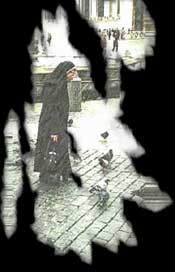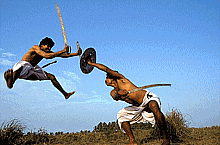|
|
The Script -The Key Element In Productions
With the basic overview of the production process out of the way, we can look at the key element in the production process: the script. There are semi-scripted shows and fully scripted shows. In the first category are interviews, discussions, ad-lib shows, and many demonstration and variety shows. The scripts for semi-scripted shows resemble a basic outline, with only the show segments and their times listed. Although scripts for a semi-scripted show might be comparatively easy to write (since there isn't much to write!), this type of show puts pressure on the director and talent to figure things out as they go along-and to try to bring things together "on the fly." Much in contrast, the scripts for fully scripted shows list the complete audio and video for every minute. In a fully scripted show the overall content, balance, pace and timing can all be figured out before the production starts. Unpleasant surprises are minimized. (Notice we didn't say eliminated).
|
|
The Concrete-to-Abstract Continuum Documentary and hard news
pieces should be reasonably concrete, that is, they should present information
so clearly that the possibility for misunderstanding is minimized. In fact, the
better you are at clearly explaining things, the A concrete news script would be quite different in approach and structure from the script for a feature story, a soft news piece, a music video, or a dramatic production. In the latter cases it's often desirable to not be too concrete-to allow room for personal interpretation. Let's look at two examples. An instructional video on the operation of a software program would need to be as concrete as possible. Given the nature of computers and computer programs, information would have to be presented in a clear, step-by-step, fashion. Although the material should be presented in a creative, interesting, and possibly even humorous way, the success of this type of production would rest on each member of an audience getting the same clear idea of a specific sequence of operational procedures. Success would be easy to evaluate; if most of the people who see your video can successfully operate the program afterward, you're successful; if they can't, you're not. In Unlike software programs or stereo components, fashions are not sold on the basis of technical specifications; they appeal largely to the ego and the emotions. So, in doing the fashion piece we are not as much interested in communicating facts as we are in generating some excitement about new fashions; i.e., creating a positive emotional response to the content. Likewise, a soft news piece on exercise would not emphasize facts as much as action. It's approach would be more abstract. Instead of facts, its purpose would be to communicate something of the feelings surrounding exercise and the feelings that go along with having a slim, trim, fit body. Once the intent and focus of the production are established and the characteristics of the audience are known, the various program elements can be selected and arranged. In scripting content, a logical and linear sequence is, of course, the most natural approach-especially when information must be presented in a concrete, step-by-step fashion. An example would be the instructional computer piece already cited. Often, however, it's desirable to abandon a structured, linear presentation. In fact, the latter can get predictable and boring. In dramatic productions the techniques of using flashbacks (momentarily cutting back to earlier events) or presenting parallel stories (two or more stories running concurrently) can add variety and stimulate interest. But, whatever you do, make
sure you present the materials in a way that will hold the attention and interest
of your
In thinking through and visualizing your scenes, if you discover spots that don't seem as if they would hold view attention, make changes. Spicing Up Interviews For better or worse, interviews are the mainstay of many, if not most, non-dramatic productions. Because of this, and because of the difficulty involved in making most interviews interesting, they require special attention. (Later, we'll talk about interviewing techniques.) Even though "talking heads" can get be pretty boring, the credibility and authenticity involved in getting information directly from an authority or the person involved in a story is often better than having a narrator present the same information. Video and audio variety can be introduced into interview centered programming by regularly switching to new speakers in new locations Unless the person being interviewed on camera is an unusually gifted speaker or is recounting a highly dramatic and engaging event, interviews should be broken up into short segments and intercut with related material. This will take place during the editing process. Except for rather intense
and emotional subject matter, keep in mind that once we see what someone looks like
on camera, you may be able to B-roll footage typically consists of shots of people, objects or places referred to in the basic interview footage-the A-roll.
Whenever you plan an interview you'll also want to plan for B-roll footage to supplement the points being discussed. Sometimes you won't know what this will be until after you do the interview, so keep your production options open. When the script is written, you need to be able to specify exact points in the interview (A-roll) to insert the B-roll footage. Since trying to simply describe points in scenes for edits can end up opening the door to errors, not to mention requiring lots of words, the only way to effectively do this is to use precise time-code numbers to describe the exact in and out points of each video and audio segment. Time-code, sometimes called SMPTE/EBU time-code
after the organizations that adopted it, refers to the eight digit numbers that
By using these numbers, points on video recordings within at least 1/30th second can be specified. This level of accuracy can be quite important for a tightly edited show. You can see the time-code numbers in the picture on the left. In this case they are read as 0 hours, 1 minute, 16 seconds, and 12 frames. We'll go more into time-code in the editing sections. Documentary writers who prefer a systematic approach (and have the luxury of the time) start by getting a transcript of the interviews typed up on a computer, complete with time-code references. This is especially valuable if there are numerous, lengthy interviews that need to be broken up and rearranged in a topical sequence. Once on computer disk, word or phrase searches can be done to quickly locate key words or topics in the various interview segments.
The segments can then be condensed, rearranged and assembled right on the computer screen to provide the most logical and interesting flow. If time-code numbers are included with the video segments, it becomes a simple matter of writing down the time-code in and out points you want.
In writing the script you must be alert at each moment to use the most effective means of getting your ideas across. Sometimes you can best do this by asking yourself some questions. What technique will best illustrate a necessary point: a narrator, a short clip from an interview, an electronically animated sequence, a graph, or a still photo? As you pull the elements together, think of yourself as watching the show and try to visualize exactly what's going on at each moment. It's said that great composers can hear each instrument in their heads as they write music. In the same way effective scriptwriters are able to visualize scenes as they write their scripts. In establishing the pace of the production there should not be long, slow periods or even long periods of fast pacing. Either will tire an audience. Except for short, fast-paced montages, scene segments should be at least two seconds in length. Conversely, only a scene with plenty of action or intensity will be able to hold an audience for more than a minute. To capture and hold attention, productions must engage the audience quickly. To leave an audience with a positive impression, your production must have an effective ending. In between, you have to keep interest from drifting by varying pace, emotional content, and presentation style. Not an easy assignment. |

 more
successful you will be.
more
successful you will be.  contrast
to this concrete type of production would be a feature piece on jazzercise or new
fashions. Given the fact that the audience has undoubtedly seen scores of television
segments on fashion, the first challenge would be how to approach the segment in
a fresh, creative, attention-getting way. Considering this challenge, actually doing
the piece would probably be the easy part.
contrast
to this concrete type of production would be a feature piece on jazzercise or new
fashions. Given the fact that the audience has undoubtedly seen scores of television
segments on fashion, the first challenge would be how to approach the segment in
a fresh, creative, attention-getting way. Considering this challenge, actually doing
the piece would probably be the easy part.  audience. You can do this by:
audience. You can do this by: enhance
interest and pace by cutting in B-roll (related
supplementary) footage during the editing phase. At the same time, the
B-roll footage must not distract from what is being said.
enhance
interest and pace by cutting in B-roll (related
supplementary) footage during the editing phase. At the same time, the
B-roll footage must not distract from what is being said.  identify
the exact hours, minutes, seconds and frames in a video.
identify
the exact hours, minutes, seconds and frames in a video. Most
word processing programs allow for two or more windows on the screen. Using
this approach, the interview transcript can be searched and reviewed in one window
while the script is written in the other.
Most
word processing programs allow for two or more windows on the screen. Using
this approach, the interview transcript can be searched and reviewed in one window
while the script is written in the other. Whenever
it's necessary to explain or amplify points or to establish bridges between interview
segments, narration can be written. An announcer will generally read this over B-roll
footage.
Whenever
it's necessary to explain or amplify points or to establish bridges between interview
segments, narration can be written. An announcer will generally read this over B-roll
footage.